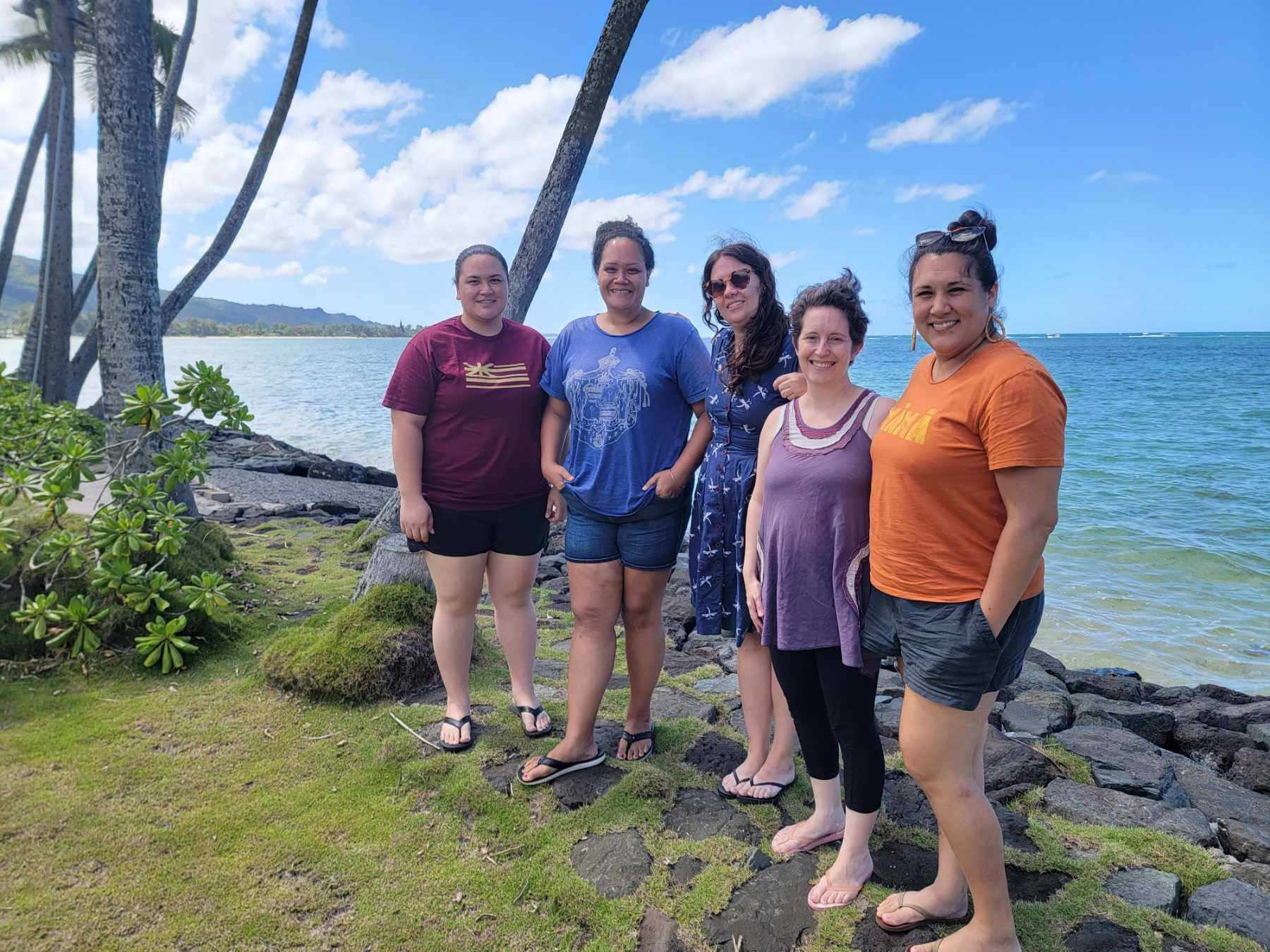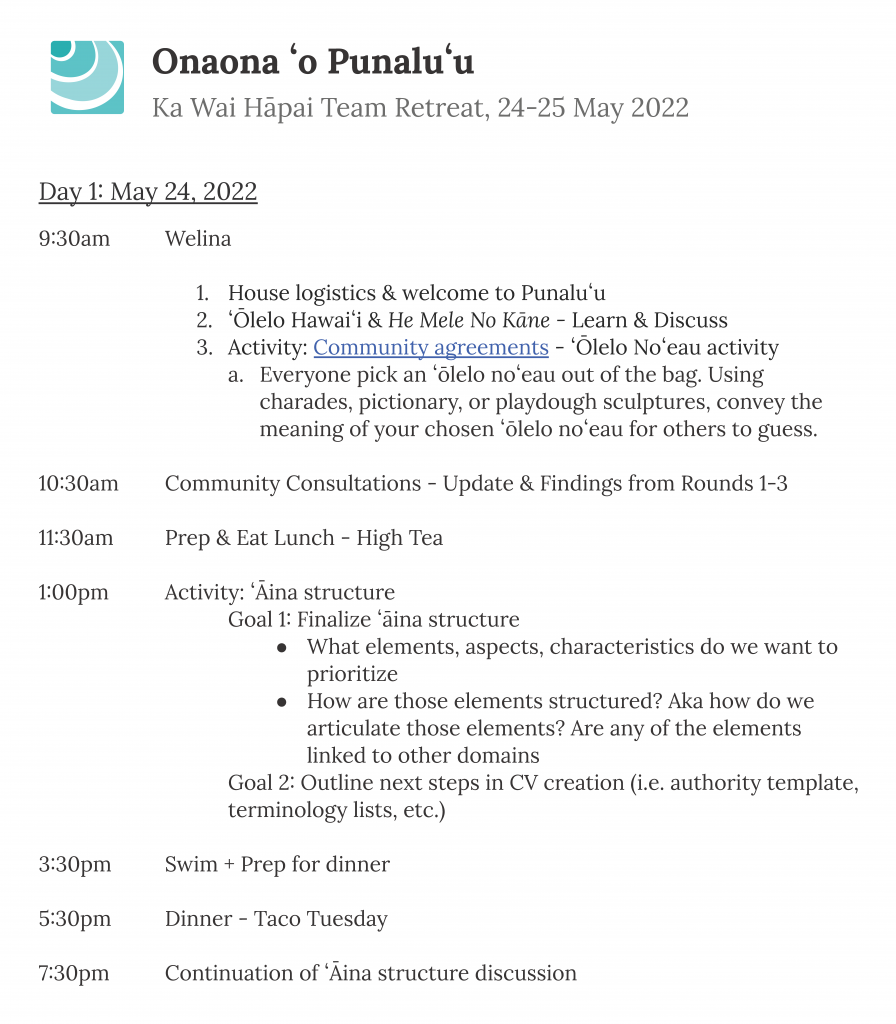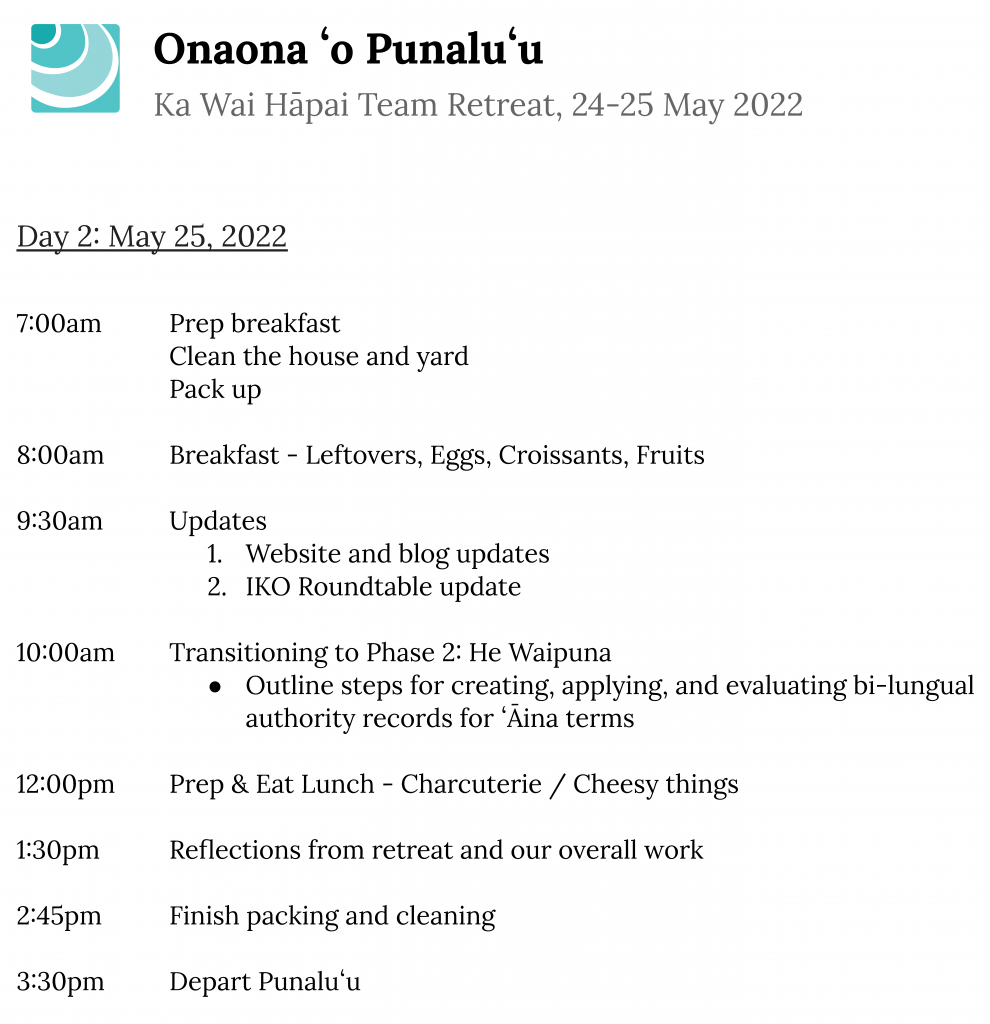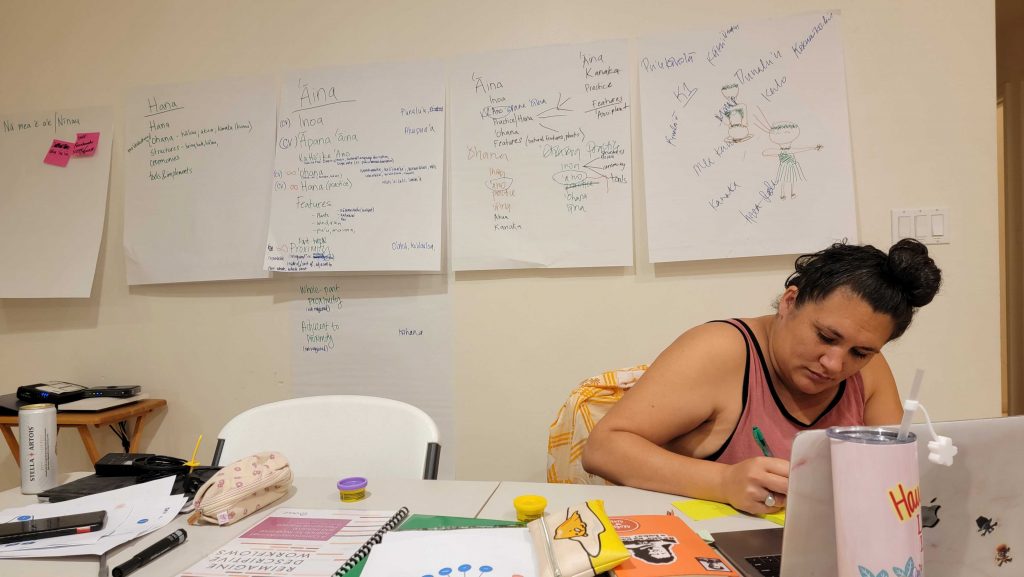
Last week (May 23-May 25), our Ka Wai Hāpai team held our first in-person retreat at Hale o Punaluʻu, one of the houses in Punaluʻu, Koʻolauloa, Oʻahu that belong to Kamehameha Schools.
Fun fact! Punaluʻu is an entire ahupuaʻa that belongs to Kamehameha Schools. After Kamehameha Paiʻea united the islands in 1810, Kamehameha gave the ahupuaʻa of Punaluʻu to his younger brother, Keliimaikai. It was here in Punaluʻu that Keliimaikai's son, Kekuaokalani, was raised. Punaluʻu eventually came under the control of Ruth Keelikolani, who, upon her passing, bequeathed these lands to her cousin, Bernice Pauahi Bishop. Thus, these lands in Punaluʻu are a part of the land legacy of Kamehameha Schools. (Mahalo nui loa to Kihei Nahale-a for the information!)
The retreat took place over two days. You can find the full agenda here:


The goals for our retreat were:
- Build and strengthen relationships amongst team members
- Review the structure of the authority file template for the ʻĀina domain
- Outline steps for the transition to Phase 2 of our project, He Waipuna
Goal 1 was accomplished with lots of cheese 🙂 Mahalo nui to our Evaluation Lead, Eleanor Kleiber, for providing an amazing charcuterie spread for lunch on the last day!
Goals 2 and 3 were met with patient, creative problem-solving. Our conversations, brainstorms, and trials were full of questions about characteristics of ʻāina and how to articulate those characteristics. For example, are all geographical features (e.g. mountains, peaks, streams) noted in a repeating field? Or in separate, distinct fields? And which characteristics, then, link to other domains? Also, from what sources are we gleaning terms to express these characteristics?
With post-its, chart paper, pens, markers, hand gestures, and late-night musings, we delved into these questions. What resulted was a draft of an authority form template for ʻĀina that we all felt comfortable moving forward with. This template includes facets like:
- Inoa (name) – repeatable
- Wahi (type of place/geographic location, e.g. moku (island, district), mauna (mountain), kahawai (stream))
- Hiʻohiʻona (features, e.g. mea kanu (plants), makani (winds), kūlana nalu (surf breaks)) – repeatable

Over the next few months, our plan is to:
- Pilot test creating authority records for 25 ʻāina terms, using the authority file template
- Identify authoritative resources about those terms
- Apply terms to a selection of 50 resources (e.g. books, articles, artifacts)
- Assess the quality, integrity, and rigor of this process, the resulting authority records, and the application of the terms to existing resources
The project retreat was a success on all accounts: we reached our project goals and grew deeper appreciation for one another.
I’ll close this post with the ʻōlelo noʻeau that begins our Community Agreements: he huewai ola ke kanaka na Kāne (ʻŌN #598). Pukui explains that one meaning of this phrase is “Man is Kāne’s living water gourd.” Here, water is life, and Kāne (one of our most important akua) is the keeper of water. We each hold in us the amazing potential for life, to live life, and to give life. I hope this work helps to realize this potential for me, my ʻohana, and our lāhui.
